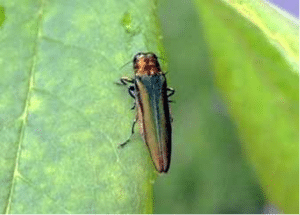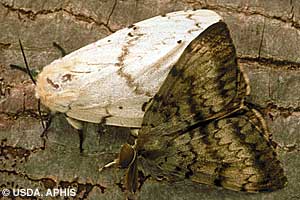The Office of the Environment (OE) was created in 1992 to increase the environmental regulatory presence on the Lower Sioux Reservation and to develop environmental programs for the community. Since that time, the OE has developed a wide variety of environmental programs and has worked effectively over the years to improve the health and safety of tribal members.
Mission Statement of the Office of the Environment
“To ensure the health, welfare, and safety of tribal members while protecting and conserving the earth’s natural resources for today’s and future generations.”


Contact Office of the Environment
P.O. Box 308, 39527 Res Hwy 1
Morton, MN 56270
Mike Aude
Brownfields Coord.
Ext. 8651
Environmental Programs
Below is a list of programs offered by the Lower Sioux Office of the Environment.
To fully assert and exercise its powers as a sovereign and protect the Air Quality of the Tribal Community, Lower Sioux plans to monitor large expansions in a 50-mile radius of the Community that may lessen the air quality. Also implement measures to protect the air quality that is located within the exterior boundaries of the tribal community through ambient and indoor air quality outreach/education.
Projects Include
- Researching the regional issues related to Confined Animal Feedlot Operations (CAFOs)
- Addressing concerns on Indoor Air Quality (Mold, Air Quality and Radon issues) within Lower Sioux Housing
- Improve the procedures used to identify and response to tribal member concerns and complaints related to indoor air quality in homes
- Participate in regional air quality committees
- Provide air quality outreach and conduct education opportunities
- Develop ordinances to target reduction of pollution from local sources
Conduct projects to move forward in our goal to become a more energy efficient tribal community through measures such as wind power expansion, energy efficiency, weatherization, and other activities that reduce greenhouse gas emissions.
Projects Include
- Development of the Lower Sioux Wind Energy Feasibility Project
- Development of the Water/Wastewater Energy Efficiency Plan
- Implement the Small Customer Energy Usage Plan
- Research the use of BioFuels and Biomass Crops
- Conduct Weatherization Assessments of Lower Sioux government buildings
The Lower Sioux established a Brownfield Tribal Response Program in 2006 in order to create standards of land care which will become management tools to correct past land abuses and secure the future for the Lower Sioux's seventh generation of Dakota.
Projects Include
- Develop system to inventory, track and provide public access to information on illegal dump sites and mitigation
- Renew sites with potential contamination and illegal dumping (Brownfields).
- Develop Integrated Solid Waste Management Plan
- Update Lower Sioux's Emergency Operations plan
- Participate in Tribal Emergency Response Commission {TERC) and the Regional, County-based Emergency committee(s)
- Develop Clean-Up Standards for site response
- Restoration of Prairie areas and Traditional Plants
- Identify best management practices
EPA’s Renovation, Repair and Painting (RRP) Rule requires anyone (remodeling, renovation and painting contractors and most other trades) who works in pre-1978 housing for compensation and who might disturb painted surfaces to become an EPA Certified Renovator by taking a “Lead Safe Work Practices” RRP class from an EPA-accredited training provider. Click below for a list of local contractors (within 50 mile radius) certified for RRP rule.
The RRP rule covers a lot of jobs: renovation, remodeling, painting, window replacement, plumbing, electrical work, heating & air-conditioning, demolition, plus work performed by trades like carpenters, electricians, and handymen. The rule also applies to persons working for rental property owners, schools, and daycare providers. And, it also applies to nonprofits and governmental agencies.
Continue environmental staff training in order to improve the scientific and technical expertise of the Office of the Environment Staff.
Increase and enhance the OE Staff expertise in order to obtain time-efficient, quality-assured, base of scientific and general data and information concerning all environmental media. This information will be utilized to develop protection programs, justify regulation, institute mandatory regulation, continue environmental education efforts, and respond to immediate environmental crises or requests for information.
To fully assert and exercise its powers as a sovereign and protect water resources and aquatic communities, the Lower Sioux Indian Community plans to monitor/assess the quality of its waters and develop and implement appropriate programs to protect and/or restore water quality.
Projects Include
- Water quality monitoring of surface and ground waters
- Inventory of wetlands resources including mapping the resources by function
- Wetland protection and enhancements
- Nonpoint pollution source control (NPS) program development
- Watershed Planning and involvement in the Mississippi River Basin Initiative
- Source Water Protection Plan development
- Storm water for Construction Permits oversight
- Address the issues related to the Climate change effects on water quality/quantity

This program was made possible by the Circle of Flight grant which was awarded to the Lower Sioux Community this past spring. This grant enabled the OE to purchase 1,000 lbs of green wild rice seed from the Leech Lake Band of Ojibwe. Three locations were chosen as the most suitable habitat for the wild rice seed: the pond by the gravel pit, “Hank’s” Lake, and the Pendleton pond. Careful monitoring of these sites will occur over the coming years to see how well the seed takes to each location but we are very hopeful that in 5-7 years there will be harvestable wild rice located right here at Lower Sioux!
Special thank you to everyone who came out to this program and who helped make this event into such a great success!
Environmental Resources
Below is a list of resources from the Lower Sioux Office of the Environment.
The AQI is an index for reporting daily air quality. It tells you how clean or polluted your air is, and what associated health effects might be a concern for you. The AQI focuses on health effects you may experience within a few hours or days after breathing polluted air. EPA calculates the AQI for five major air pollutants regulated by the Clean Air Act: ground-level ozone, particle pollution (also known as particulate matter), carbon monoxide, sulfur dioxide, and nitrogen dioxide. For each of these pollutants, EPA has established national air quality standards to protect public health. Ground-level ozone and airborne particles are the two pollutants that pose the greatest threat to human health in Indian Country.
Air Quality
Lower Sioux Indian Community has above average Air Quality with only a few days out of the year where for some pollutants there may be a moderate health concern for a small number of people who are unusually sensitive to air pollution. These days are when we have strong northeast winds which bring particulates down from the metro area or foggy dense days. People are not recommended to do any burning or heavy physical work on foggy, dense days.

Where to look for blue-green algae?
Blue-green algal blooms typically occur on lakes with poor water quality (high in nutrients), and look like green paint or pea soup but can also be found in slow moving waterways such as rivers. There is no visual way to predict the toxicity of an algal bloom. So it’s best for yourself, your family, and your pets to keep out of questionable water.
Why are there blue-green algal blooms?
The blooms become prominent in areas high in organic nutrients, such as those found in fertilizers, entering aquatic habitats. Recreational waters near farms and residential lawns typically harbor organic nutrients that can spark the growth of algae and potentially, cyanobacterial (blue-green algae) growth.
Watch for pesky insects and early signs of Lyme’s disease
- Deer Tick Identification: The size of the deer tick can vary depending on the sex of the tick and feeding state. Approximately the size of a sesame seed, a female adult deer tick measures about 2.7 mm in length. The males are smaller. Deer ticks tend to live in wooded areas and along trails in forests. Ticks are often on the tips of grass and leaves along trails, to enable them to crawl directly onto the skin or fur of a passing host.
- Signs of Lyme: The signs and symptoms of Lyme disease vary among individuals. A person may not have all of the symptoms and may feel like they have the flu but the following are signs to consider: A distinctive rash, fever, chills, headache, muscle and joint pain, and fatigue.
According to the MDH, days to weeks after onset of illness, one or more of these signs and symptoms may occur: Multiple rashes, facial paralysis on one side of the face, fever, stiff neck, headache, weakness, numbness or pain in the arms or legs, or irregular heartbeat. Other signs could be joint swelling, arthritis, problems with the nervous system or persistent weakness and fatigue.
Have a fun and safe summer. If you have any questions about this article, please call the Office of the Environment: Environmental Specialist: (507) 697-8642.
Are Cleaning Products Safe for Your Family?
Cleaning Product Safety Sure, your home is clean…but, is it safe for your family? Did you know that the products you use for cleaning, carpentry, auto repair and gardening can contain ingredients that can harm you, your family and your environment?
These products may harm your children and pets, cause physical injury to sanitation workers if put out for regular trash pick-up, and contaminate septic tanks or pollute the ground water if poured down drains and toilets.
Here’s what you can do to safeguard your family, your home and your community.
Always Read the Label
Before you buy, always check the product labels. Look for labeling that reads “DANGER,” “WARNING,” “CAUTION,” “TOXIC,” “CORROSIVE,” “FLAMMABLE,” or “POISON.” These warnings tell you if the product is harmful to you, your family and the environment, and how to use, store and dispose of it safely.
Carbon monoxide is a gas that has no odor, color, or taste. You cannot see or smell it, but it can be very dangerous to your health and even fatal, as seen in Duluth, MN in early December 2014. Dangerous situations can occur when carbon monoxide is trapped in poorly ventilated, contained spaces where people are located. If there is too much carbon monoxide in the air you are breathing, your ability to absorb oxygen can be diminished, resulting in serious tissue damage.
Signs and symptoms of carbon monoxide poisoning may include:
- Headaches
- Nausea
- Dizziness
- Breathlessness
- Collapse
- Loss of Consciousness
Carbon monoxide poisoning can be especially dangerous for people who are sleeping.
Various appliances fueled by wood or gas produce carbon monoxide, including:
- Fuel-burning space heaters
- Furnaces
- Charcoal grills
- Cooking ranges
- Water heaters
- Fireplaces
- Portable generators
- Wood-burning stoves
- Car and truck engines
Normally the amount of carbon monoxide produced by these sources isn't cause for concern. But if appliances aren't kept in good working order or if they're used in a closed or partially closed space — such as using a charcoal grill indoors or running your car in a closed garage — the carbon monoxide can build to dangerous levels.
What can you do?
- Ensure that appliances are in good working order.
- Check that you have a carbon monoxide detector in the hallway near every area of your home that is used for sleeping. Make sure furniture or draperies do not cover the alarm. Test alarm to make sure it is in good working order.
- Make sure that you have good air ventilation.
- Get your heating system professionally inspected and serviced every year.
- In an attached garage, even if the door is open, do not leave a car running.
- Do not operate a portable generator or any other gasoline engine-powered tool in or near any house, garage or other enclosed space.
Be Prepared in an Emergency
This year the Focus of the National Preparedness Month is to encourage everyone to take four important preparedness steps to prepare for and respond to potential emergencies:
- Get a Kit – Assemble items that are basic to survival for at least 3 days—water, food, first-aid kit, dust mask (more comprehensive list below).
- Make A Plan – Make sure you have a family emergency plan so you know how to contact one another if disaster strikes when you are together.
- Be Informed – Learn about what to do during the different emergencies most common in the area you live.
- Get Involved – After preparing yourself and your family for possible emergencies by getting a kit, making a plan and being informed, take the next step and get involved in preparing your community.
National Preparedness Month is sponsored by the U.S. Department of Homeland Security.
FEMA Recommendations for Emergency Kits
- Water for 3 days, a gal per day/person
- 3 days supply of non-perishable food
- Sanitation items such as toilet paper and hand sanitizer
- Batteries
- Flashlight
- Radio
- First aid kit
- Photocopies of credit cards and identification cards
- Moist towelettes, garbage bags and plastic ties for personal sanitation
- Wrench or pliers to turn off utilities
- Manual can opener for food
- Local maps
- Cell phone with chargers, inverter or solar charger
- Matches in a waterproof container
- Toothbrush, toothpaste, soap
- And other things that would be appropriate for your family such as baby diapers, hearing aids, contact lenses and solution/glasses, etc.
Supplies could be kept in a special cabinet. For more information please visit: Ready.gov.
Dos & Don’ts of Water Conservation
Do: Turn off the tap
You’ve heard it before—turn off the water when brushing your teeth! But do you know just how much this saves? The average faucet releases two gallons of water per minute; you can save up to eight gallons of water every day by turning off the tap while you brush your teeth (if you brush for the recommended two minutes, that is).
Don’t: Don’t use the toilet as an ashtray or wastebasket
Every time you flush a cigarette butt, facial tissue or other small bit of trash, five to seven gallons of water is wasted.
Do: Take shorter showers
One way to cut down on water use is to turn off the shower after soaping up, then turn it back on to rinse. A four-minute shower uses approximately 20 to 40 gallons of water.
Don’t: Forget to fix leaky sinks and running toilets
Another one that is really important: A running toilet can waste up to 200 gallons of water each day. At one drip per second, a faucet can leak 3,000 gal in a year. Call the plumber and save some money and conserve some water!
Energy-Efficient Home Improvements That Save Money
Insulation: Insulation keeps your house warm in the winter, cool in the summer and reduces heating and cooling costs by as much as 20 percent, according to Green Energy Solutions, Inc., a company that specializes in retrofitting buildings to make them more energy-efficient. You can pick up a roll of insulation for about $15 at home improvement stores.
Lighting: Fluorescent bulbs last four to 10 times longer than regular light bulbs. While they’re more expensive initially, you’ll save about $6 per year on energy bills, according to Energy Star.
Home Temperature: Programmable thermostats have become popular due to their energy- and money-saving benefits. When used properly, this device can save users up to $150 per year, and it’s generally more accurate than a regular thermostat, according to Energy Star.
Weather Stripping: You can save a ton of money by patching up that draft in your kitchen or bedroom. In homes that haven’t been weather stripped, air leaks account for 30 to 40 percent of heating and cooling loss, according to Energy Star. Weather stripping materials start for as little as $5 at home improvement stores.
Learn more at Energy.gov.
Big Threat – Small Package

In North America, EAB only kills ash trees. But it does so in great number. EAB has killed millions of ash trees already. It is expected to have a huge effect on Minnesota’s landscape and the 937 million ash trees that grow in our cities and forests.
Effects of Emerald Ash Borer
Killed tens of millions of ash trees in southeastern Michigan alone, with tens of millions more lost in Ohio, Illinois, Indiana, Pennsylvania, West Virginia, Missouri, Wisconsin, Virginia, Ontario, and Quebec.
Ash Borer EffectsCaused regulatory agencies and the USDA to enforce quarantines (Michigan, Illinois, Indiana, Maryland, Missouri, Ohio, Ontario, Pennsylvania, Quebec, Virginia, West Virginia, and Wisconsin) and fines to prevent potentially infested ash trees, logs or hardwood firewood from moving out of areas where EAB occurs.
Cost municipalities, property owners, nursery operators and forest products industries tens of millions of dollars.
Office of the Environment will be setting out traps to see if this species is prevalent on LSIC. Traps are made out of a purple corrugated cardboard.
One of the nicest things about living in northern climates is the ever changing seasons. For a few weeks, nature puts on one of its most spectacular displays as native trees and shrubs finish out the growing season in a brilliant display of fall colors.
Jack Frost usually gets credit for the beautiful colors, but in reality, fall color is controlled by both the plant’s genetic factors and the environment. Carotene and xanthophylls are yellow pigments produced in foliage all year; along with chlorophyll, the green pigment. In autumn when short days and cool temperatures slow down the production of chlorophyll, the remaining chlorophyll breaks down and disappears. Then the yellow pigments that have been masked by chlorophyll show up. These pigments give the ginkgo its clear yellow color.
Fall Colors
Some plants produce anthocyanins (red and purple pigments) that may mask the yellow pigments. Some maples, dogwood, oaks seem to be on fire with red and purple.
Anthocyanin production increases with increased sugars in the leaves. A fall season with sunny days and cool nights increases sugar content in the leaves and intensify fall reds. This also explains the two-tone effect on green ash which exhibits yellow on leaves inside the tree and purple on the outside leaves where they are exposed to sunlight.
The tans and browns of oaks are caused by tannins which accumulate as the chlorophyll disappears. Fall color starts in September with poison ivy and sumac and ends in November with the larches and weeping willows. Frost and freezing temperatures will stop the coloration process and blacken the leaves.
With Labor Day come and gone, the river valley is starting to change. A majority of trees are showing some signs of fall with sumac leading the pack displaying its deep, brilliant reds.
The forest tent caterpillar is a native defoliator of a wide variety of hardwood trees and shrubs. The FTC’s range in North America extends from coast to coast and from the tree line in Canada to the southern states. These insects feed primarily on aspen and birch trees in northern Minnesota and on basswood and oaks in central and southern Minnesota. The only hardwood not regularly fed on is red maple. In fact, FTC will even eat tamarack foliage during outbreaks. It is often mistakenly called the armyworm.
Forest Tent Caterpillar Outbreaks
Widespread outbreaks of FTC occur at intervals of ten to twenty years and are three to five years in duration. Locally, outbreaks normally last for two to three years. Widespread outbreaks occurred in Minnesota in 1922, 1937, 1952, 1967, 1978, and 1990. Outbreaks commonly begin over large areas simultaneously, primarily the result of weather preceding the outbreak. Population buildups can be triggered by a cool winter followed by a warm spring. Cool springs and warm winters usually accompany a population collapse.
During outbreaks, Forest Tent Caterpillars can number from one to four million caterpillars per acre. They create an extreme nuisance to people living or vacationing in forested areas. Young caterpillars spin threads and fall from the trees onto picnic tables, patios, and people causing serious annoyance.
In the forest, defoliation from FTC usually causes little damage to tree health. Most trees develop a second set of leaves after attack, but these leaves are noticeably smaller and tend to cluster near the branch tips. The second year after the collapse of an outbreak, 80% of the trees have normal sized leaves. FTC defoliation reduces tree vigor, but vigor recovers within a few years of the population collapse.
The FTC is a native insect and has evolved in the forest ecosystem for thousands of years. Natural control mechanisms have also evolved which help to keep outbreaks from seriously damaging forested areas. A natural control mechanism that causes population collapse is starvation induced by the caterpillars’ feeding.
On September 29th – October 2nd, 2009, the Office of the Environment (O.E.) began sampling the soil and groundwater at the gravel pit dump site off Res. Hwy 1. We also sampled the abandoned, burnt down house along that stretch of road for asbestos contamination, as well.
This sampling was done as part of the Brownfields Program the O.E. is developing. It is a program that uses federal funding to assist the community in cleaning up contaminated lands that can potentially be re-used in development.
In order to do the necessary sampling, the O.E. hired a consulting firm, EMR, INC, to come out and perform the sampling procedures. In order to sample the gravel pit, they brought out a big piece of machinery called a GeoProbe, which is used to drill deep into the ground to collect samples of the soil at different depths and also to reach the water table to collect water samples. 21 total spots were chosen throughout the dump to be sampled and after the samples were collected they were shipped off to a lab in Minneapolis where they will be tested for multiple contaminants.
Asbestos Samples
To collect the asbestos samples from the abandoned house we collected about 30 little pieces of various materials throughout the house, and sent them to be tested. At this point we are still waiting to get the results back. Once we do, we will let the community know what was found and our ideas going forward.
If you want to find out any more information, or have any questions or concerns, please feel free to contact us.
The gypsy moth is an invasive forest pest from Europe that is one of the most damaging tree defoliators currently. Aspen and oak top the list of over 500 preferred host species. Gypsy moth caterpillars feed on leaves of deciduous trees and are present in early-mid summer. Pictured to the Right (Left: Female, Right: Male)

Why are Gypsy Moths Such a Problem?
- They are voracious eaters and can completely defoliate entire trees.
- Outdoor recreation might be reduced as a result of bare trees, caterpillar presence on trees and roads, and feces falling from trees.
- Repeated defoliation can lead to the death of many trees, changing the mix of tree species and affecting dependent wildlife.
- Tree losses can impact forest and related industries.
- Because gypsy moths are non-native, there are few natural enemies to keep them in check.
Office of the Environment will be doing a study on Lower Sioux forests to see if there is a problem occurring with Gypsy moths this Spring/Summer.
Brownfield Public Record – Quality Assurance Project Plan (QAPP)
In April of 2009, the LSIC – Office of the Environment/Brownfields contracted the Environmental Consulting Firm, EMR, INC to develop a QAPP for describing the personnel, procedures, and methods for ensuring the quality, accuracy, and precision of data associated with the LSIC Brownfields Assessment Projects. In September of 2009, after being reviewed the QAPP and HASP was approved by the U.S. EPA.
Sampling and Analysis Plans (SAPs) & Health and Safety Plans (HASPs)
In June of 2009, the LSIC – Office of the Environment/Brownfields contracted the Environmental Consulting Firm, EMR, INC to develop SAPs and HASPs for future sampling of LSIC Inventoried Brownfields Sites (The Gravel Pit, and Abandoned (Burnt) House). The plans give a detailed account of the protocols followed in how all sampling and analysis of the sites will occur in accordance with the QAPP and Standard Operating Procedures (SOPs). It also addresses the protocol that will be followed to insure the health and safety of the workers and community.
Site Assessment Information
Gravel Pit/Illegal Dump Site:
Location: 44.5350 degrees North Latitude; 95.0043 degrees West Longitude (at the end of Reservation Highway 1, on the south side of the road).
Size: ~40 acres
Phase I:
In the fall of 2009, the LSIC – Office of the Environment/Brownfields contracted the Environmental Consulting Firm, EMR, INC to come in and perform the necessary Environmental Site Assessments (ESA) to evaluate the likelihood of any presence of Recognized Environmental Conditions (RECs), meaning the presence or likely presence of regulated hazardous or dangerous wastes and/or substances, including petroleum products, under conditions that indicate an existing release, a past release, or a material threat of a release into the structures of the property or into the ground, groundwater, or surface water of the property.
The subject site and surrounding area was visually inspected to ascertain issues of environmental concern. Concerns that were observed were; improper disposal of debris (eg. Concrete, asphalt), used household items, discarded wood, glass, trash and metal. The only disposal of hazardous material of concern was used lead acid batteries; however, there was no indication of environmentally suspect activities.
The scope of work was in general accordance with the American Society for Testing and Materials (ASTM) Standard E 1527-05, Standard Practice for Environmental Site Assessment: Phase I Environmental Site Assessment Process.
Reviews of readily available information from the sites current use, as well as, past and historical uses were conducted; interviews with knowledgeable community members were performed to gather as much information about the site as possible.
Phase II:
From Sept. 29th – Oct. 1st, 2009 EMR, INC. came onto the site and performed a Phase II Environmental Site Assessment. The objective was to evaluate whether soil and groundwater beneath the site had been adversely impacted due to Recognized Environmental Conditions (RECs). Soil and ground water samples were taken from 21 different locations at various depths to test for a multitude of contaminants. Samples were then sent off to PACE Analytical Services in Mlps, MN for processing.
At this time, all documentation and results can be found by visiting the LSIC – Office of the Environment.
Abandon (Burnt) House: 39243 Res Hwy. 1:
Location: 44.5350 degrees North Latitude; 95.0043 degrees West Longitude Size: Lot = ~3.3 acres; Structure = ~ 300-500 square feet
Phase I:
In the fall of 2009, the LSIC – Office of the Environment/Brownfields contracted the Environmental Consulting Firm, EMR, INC to come in and perform the necessary Environmental Site Assessments (ESA) to evaluate the likelihood of any presence of Recognized Environmental Conditions (RECs).
The subject site was walked through and was found to contain several substances that will need proper disposal prior to demolition. Also within the dwelling, mercury-containing light switches, thermostats, fluorescent bulbs and asbestos floor tiling were observed.
The scope of work was in general accordance with the American Society for Testing and Materials (ASTM) Standard E 1527-05, Standard Practice for Environmental Site Assessment: Phase I Environmental Site Assessment Process.
Reviews of readily available information from the sites current use, as well as, past and historical uses were conducted; interviews with knowledgeable community members were performed to gather as much information about the site as possible.
Phase II:
On Sept. 29th, 2009, a representative from EMR, INC. conducted a pre-demolition (NESHAPS) hazardous material survey for asbestos-containing materials (ACM), lead based paint, and other regulated materials at the property. The intent of the investigation was to identify regulated materials requiring removal from the building prior to demolition activities and to provide cost for removal of said materials.
At this time, all documentation and results can be found by visiting the LSIC – Office of the Environment.
Abandon Water Plan Building:
Located at 39458 Res Hwy 1 (an out building on the lot, not to be confused with the Woniya Kini building).
The Lat/long is: 44.533893, -94.99703
The site may include tank, tank cover of unknown material, chemicals and equipment that was used for water treatment prior to 1996.
Public Announcements: None at this time
Radon is unfortunately, a reality for people living in southwest Minnesota. Radon is a radioactive gas that comes from the natural decay of uranium that is found in nearly all soils. It typically moves up through the ground to the air above and into your home through cracks and other holes in the foundation. Your home traps radon inside, where it can build up. Any home may have a radon problem. This means new and old homes, well-sealed and drafty homes, and homes with or without basements.
How Does Radon Get Into Your Home?
Any home may have a radon problem.
Radon gets in through:
- Cracks in solid floors
- Construction joints
- Cracks in walls
- Gaps in suspended floors
- Gaps around service pipes
- Cavities inside walls
- The water supply
Testing is easy and should only take a few minutes of your time. There are several ways you can test for radon.
- Buy a Kit: Radon test kits can be found online at the Minnesota Department of Health website.
- Stop by your local Menards or Walmart and ask for a test kit that can be set up in home (cost between $15-$30)
- Find a Radon Test Kit or Mitigation Professional:
Radon gas decays into radioactive particles that can get trapped in your lungs when you breathe. As they break down further, these particles release small bursts of energy. This can damage lung tissue and lead to lung cancer over the course of your lifetime. Not everyone exposed to elevated levels of radon will develop lung cancer. And the amount of time between exposure and the onset of the disease may be many years.
Smoking combined with radon is an especially serious health risk. To reduce your risk of lung cancer, stop smoking and test for radon in your home.
Radon Myths
MYTH: Radon affects only certain kinds of homes.
FACT: House construction can affect radon levels. However, radon can be a problem in homes of all types: old homes, new homes, drafty homes, insulated homes, homes with basements, homes without basements. Local geology, construction materials, and how the home was built are among factors that determine if radon is found in the home.
Contact the Office of Environment to learn more about Radon.


Need more information?
We are committed to improving the health and well-being of our community members. If you have questions or need assistance, please contact us.
